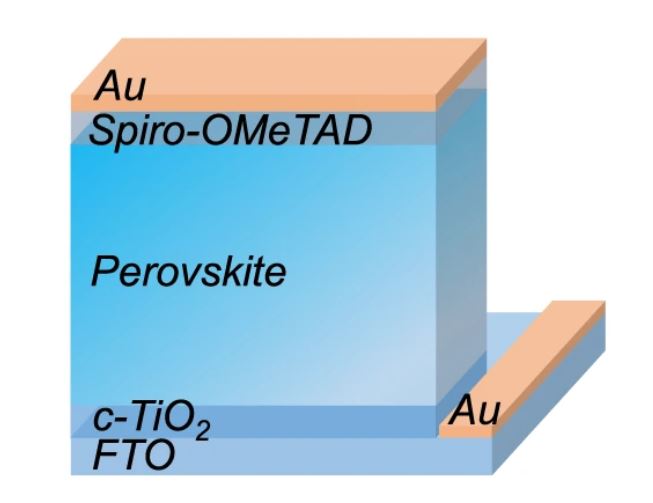Researchers at the Shaanxi Normal University in China have designed a novel control strategy to reduce the formation of anions vacancy defects in halide perovskite solar cells and have found that this new approach results in higher efficiency and remarkable stability.
The new method, which they defined as a one-stone-for-two-birds strategy, utilized a ligand known as 3-amidinopyridine (3AP) to pin anions in the device. Anions can control the nucleation and growth of the perovskite crystals and act as a passivating agent to improve the crystallinity, thus ensuring improved efficiency.
The scientists claim the 3AP molecules deposited on the perovskite layer are able to form strong chemical bonds with the cell's lead(II) iodide (Pb–I) interlayer and, as a consequence, create a sustainable pinning effect.
“We found that 3AP molecules were arranged in parallel and anti-symmetrically between Pb–I frameworks with a short interlayer distance of 3.45 angstrom (Å), which is much shorter than that obtained for previously reported ligands, leading to unique coordination within the crystals,” they explained.
The researchers built the cell with a substrate made of tin oxide (FTO), a titanium oxide (TiO2) electron transport layer, a halide perovskite known as α-formamidinium lead iodide known as α-FAPbI3, a spiro-OMeTAD hole transport layer, and gold (Au) metal contact.
They evaluated the performance of the device via density functional theory (DFT) calculations and compared it with that of a reference cell utilizing commonly used large organic ligands such as 2-phenethylammonium (PEA) and n-butylammonium (BA).
The group found that the 3AP-based cell achieved a maximum power conversion efficiency of 25.3%, an open-circuit voltage of 1.181 V, a short-circuit current of 26.04 mA cm−2, and a fill factor of 82.21%. The reference cell without 3AP molecules reached an efficiency of 22.76%, an open-circuit voltage of 1.123 V, a short-circuit current of 24.94 mA cm−2, and a fill factor of 81%.
Through further measurements, the academics also ascertained that a 3AP-based cell without encapsulation was able to retain 92% of its initial efficiency after 5000 h exposure at ambient conditions. “The anion-vacancy defect engineering via strong molecule–perovskite coordination provides an effective and simple solution for increasing both the efficiency and stability of perovskite solar cells,” they stated.
They presented the new anion defects control strategy in the study “One-stone-for-two-birds strategy to attain beyond 25% perovskite solar cells,” published in nature communications. “Our findings offer an effective chemical strategy for the facile fabrication of high-performance stable perovskite solar cells and are potentially applicable to other perovskite optoelectronic devices,” they concluded.
This content is protected by copyright and may not be reused. If you want to cooperate with us and would like to reuse some of our content, please contact: editors@pv-magazine.com.




By submitting this form you agree to pv magazine using your data for the purposes of publishing your comment.
Your personal data will only be disclosed or otherwise transmitted to third parties for the purposes of spam filtering or if this is necessary for technical maintenance of the website. Any other transfer to third parties will not take place unless this is justified on the basis of applicable data protection regulations or if pv magazine is legally obliged to do so.
You may revoke this consent at any time with effect for the future, in which case your personal data will be deleted immediately. Otherwise, your data will be deleted if pv magazine has processed your request or the purpose of data storage is fulfilled.
Further information on data privacy can be found in our Data Protection Policy.